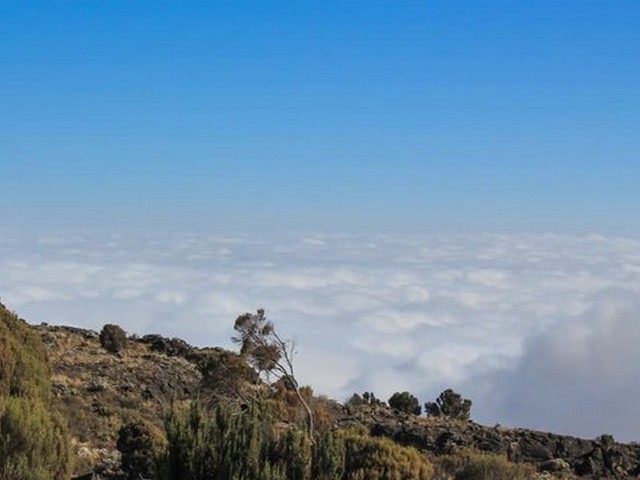How To Pack Trekking Gear For Kilimanjaro: Your Ultimate Guide
Scaling the snow-capped peak of Mount Kilimanjaro is a dream for many adventurers around the world. Often referred to as the "Roof of Africa," Mount Kilimanjaro beckons trekkers with its awe-inspiring views and challenging climbs. At Kilimanjaro Centre For Trekking and Ecotourism (KCTE), we understand that the key to a successful and enjoyable trek lies not just in your spirit of adventure but critically in how you pack. Packing your trekking gear for Kilimanjaro is an art that marries minimalism with essentialism, ensuring every item in your backpack serves a purpose.
In this comprehensive guide, we will walk you through the essentials of packing, helping you prepare meticulously for your journey to this majestic mountain. Let’s get started on making your climb a memorable one!
Understanding the Basics: Why Packing Right Matters
Before we dive into the specifics, it’s crucial to understand why packing effectively is vital. The weather on Mount Kilimanjaro is notoriously variable. Within a single day, you might experience the full spectrum from scorching sun to freezing temperatures. Proper gear will not only keep you comfortable but also safe. Overpacking, on the other hand, can be just as detrimental, making your trek unnecessarily challenging.
Essential Gear for Your Kilimanjaro Trek
Clothing: Layering Up for Diverse Climates
- Base Layer: Start with moisture-wicking underwear and thermal base layers that keep you dry and warm.
- Insulation Layer: Fleece or down jackets that offer warmth but are light enough to carry.
- Outer Layer: A waterproof and windproof jacket is crucial, as weather conditions can change rapidly.
Footwear: Choosing the Right Boots and Socks
- Boots: Invest in high-quality, waterproof, and broken-in trekking boots to prevent blisters and provide ankle support.
- Socks: Breathable, moisture-wicking socks, along with a few woolen pairs, are essential for warmth and comfort.
Headgear and Gloves
- Hat: A sun hat for lower elevations and a thermal beanie for night and higher altitudes.
- Gloves: Waterproof and insulated gloves are necessary, particularly for the summit attempt.
Backpack Essentials
- Daypack: A sturdy but lightweight daypack (30-40 liters) is ideal for daily essentials.
- Duffel Bag: Most gear will be carried by porters in a duffel bag, which should not exceed the weight limit (usually 15 kg).
Gadgets and Accessories
- Headlamp: Essential for early morning starts, especially on summit day.
- Trekking Poles: Reduce the impact on knees and improve balance.
- Hydration System: Water bottles or a hydration bladder with at least a 3-liter capacity.
How to Pack: Techniques and Tips
Balancing the Load
Distribute weight evenly in your backpack, keeping heavier items close to your back and centered. This balance is crucial for comfort and energy efficiency during your trek.
Compartmentalizing Your Gear
Use packing cubes or bags to organize items by type (clothes, gadgets, snacks). This method not only makes packing easier but also simplifies access to essentials during the trek.
Preparing for All Weather Conditions
Pack all your gear inside waterproof bags within your backpack to safeguard them against rain and moisture.
The Art of Minimalism: What Not to Pack
Resist the temptation to pack for every possible scenario. Focus on essentials and remember that every extra item adds to the load you or the porters will carry.
FAQ: Expert Answers to Your Packing Queries
Q1: How should I choose the best backpack for Kilimanjaro?
- Look for a comfortable, fit, and tested backpack with enough space for all your gear, but avoid overly large or heavy packs.
Q2: Can I rent gear instead of buying everything?
- Yes, at KCTE, we offer high-quality rental options for essential gear like sleeping bags and insulated jackets.
Q3: What should be in my medical kit for Kilimanjaro?
- Include altitude sickness medication, pain relievers, bandages, blister plasters, and personal medications.
Q4: How much water should I carry daily while trekking Kilimanjaro?
- Aim to carry and consume 2-3 liters of water daily to avoid dehydration, which can exacerbate altitude sickness.
Let’s Get Packing!
Now that you are equipped with the knowledge of what and how to pack for your Kilimanjaro adventure, the summit awaits. Remember, packing effectively is the first step in your journey to conquering this magnificent mountain.
Ready to Climb Kilimanjaro?
Feeling inspired? Book your climb with Kilimanjaro Centre For Trekking and Ecotourism (KCTE) and experience the adventure of a lifetime with the best in the business. Our expert guides, comprehensive support, and sustainable travel practices ensure that your trek is not just a journey, but a profound engagement with nature at its most sublime. Visit our website or contact us today to start planning your journey to the roof of Africa. The paths are many, but the peak is one – let’s reach it together!




